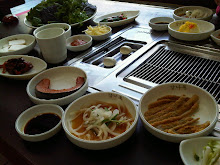Pada liburan semester genap beberapa bulan yang lalu, saya memutuskan untuk menghabiskan masa liburan selama ±2 bulan di kampung halaman orang tua saya di Sumatera Barat, tepatnya di Pariaman. Pariaman merupakan kota kecil yang terletak di pesisir pantai sebelah utara kota Padang yang banyak menyimpan khasanah budaya dan tradisi yang unik yang tidak dimiliki didaerah lain di Sumatera Barat. Ketika berada disana banyak pengetahuan budaya-budaya dan tradisi yang saya dapat dari sanak family baik dari pihak ayah maupun ibu. Itu merupakan pengetahuan baru bagi saya, karena sebagai orang yang berdarah minang, saya kurang tahu banyak mengenai adat budaya minangkabau, hal itu dikarenakan saya dilahirkan dan besar diluar Sumetera Barat. Orang tua saya pun tidak menjelaskan banyak hal tentang kekayaan budaya di Pariaman.
Disini saya akan uraikan beberapa pengetahuan yang sudah saya dapat dari sanak keluarga selama berada di Pariaman :
1. Pernikahan
Dalam adat penikahan di Pariaman, pihak wanitalah yang melamar atau membawakan uang jemputan kepada pihak pria ketika akan melangsungkan pernikahan (dijapuik).
Semakin tinggi kedudukan calon pengantin pria, semakin tinggi pula uang yang dibawakan. Tapi adat ini berlaku hanya untuk calon pasangan yang sama-sama berasal dari Pariaman. Ketika sepupu perempuan saya menikah dengan seorang laki-laki yang berprofesi sebagai dosen di Universitas Andalas (sekarang sedang melanjutkan kuliah di Malaysia) yang berasal juga dari Pariaman, dia membawakan uang jemputan sebesar 30 juta rupiah sesuai permintaan pihak laki-laki.
2. Sistem Kekerabatan
Sistem kekerabatan disana dinamakan Matrilineal yaitu hubungan keturunan yang diambil dari garis keturunan ibu. Tidak hanya di Pariaman, dalam sistem kekerabatan matrilinial di Minangkabau, pihak keluarga ayah tidak banyak terlibat dalam kegiatan-kegiatan yang dilaksanakan dalam lingkungan keluarga . Ada beberapa nama-nama suku yang ada disana dan tentunya berasal dari ibu seperti Tanjung, Koto, Piliang, Jambak, Caniago, Sikumbang, dll. Nama suku ibu saya Piliang, jadi saya dan saudara-saudara kandung saya bersuku sama dengan ibu saya.
3. Pewarisan harta pusaka
Warisan dan tanah pusaka semua diturunkan pada pihak wanita. Sedangkan laki-laki tidak memiliki hak didalamnya. Tetapi lain halnya jika ada seorang laki-laki ingin memanfaatkan tanah pusaka milik saudara perempuannya contohnya bisa dilakukan dengan cara menanami tanaman palawija (ubi, kacang, coklat, kopi jagung), hasilnya bisa dimanfaatkan olehnya tetapi tanah bukan menjadi hak miliknya. Dan satu hal jika saudara perempuannya ingin meminta sebagian hasil dari tanaman (berupa uang), saudara laki-laki tersebut berkewajiban untuk memberikan.
4. Sebutan / cara memanggil untuk sanak keluarga
Panggilan untuk keluarga ayah dan ibu memiliki beberapa perbedaan seperti:
◘Sebutan untuk paman : Kakak atau adik dari pihak ibu (paman) disebut mamak. Ada beberapa sebutan diantaranya mak’adang (untuk paman yang paling tua), mak’andah (paman yang paling pendek tubuhnya), mak’uniang (paman yang berkulit kuning), mak’etek(paman yang paling kecil),dll.
Sedangkan dari pihak ayah (semua sama sebutannya yaitu apak disertai dengan namanya contoh saya memanggil adik-adik atau kakak dari ayah saya yaitu apak Firman, apak Finaz, dan apak Ipul)
◘Sebutan untuk isteri paman : Panggilan untuk isteri paman dari pihak ibu disebut mintuo, sedangkan dari pihak ayah bisa kita panggil etek.
5.Gelar laki-laki yang sudah menikah
Laki-laki yang berasal dari Pariaman ketika susah menikah, lantas ia akan mempunyai nama gelar. Gelar tersebut berasal dari ayah. Beberapa gelar yang saya ketahui diantaranya Sutan, Bagindo, dan Sidi. Keluarga dari isteri mereka harus memanggil dengan gelar tersebut. Ayah saya dipanggil Sutan oleh keluarga dari pihak ibu saya.
6. Pesta Tabuik
Pesta Tabuik merupakan tradisi masyarakat Pariaman dalam memeriahkan tahun baru Islam dan digelar selama 10 hari dengan puncaknya disaat matahari terbenam, kedua tabuik dibuang kelaut dibawah suatu upacara yang meriah. Tabuik adalah sebuah benda berbentuk beranda bertingkat tiga yang terbuat dari kayu, rotan dan bambu. Berat Tabuik kira-kira sekitar 500 kilogram dengan ketinggian 15 meter.
Begitulah sedikit pengetahuan yang saya dapat mengenai adat budaya minangkabau di Pariaman selama mengisi liburan disana, semoga pengetahuan yang saya dapat dan saya tuliskan di blog ini bisa menambah wawasan bagi pembaca sekalian.













